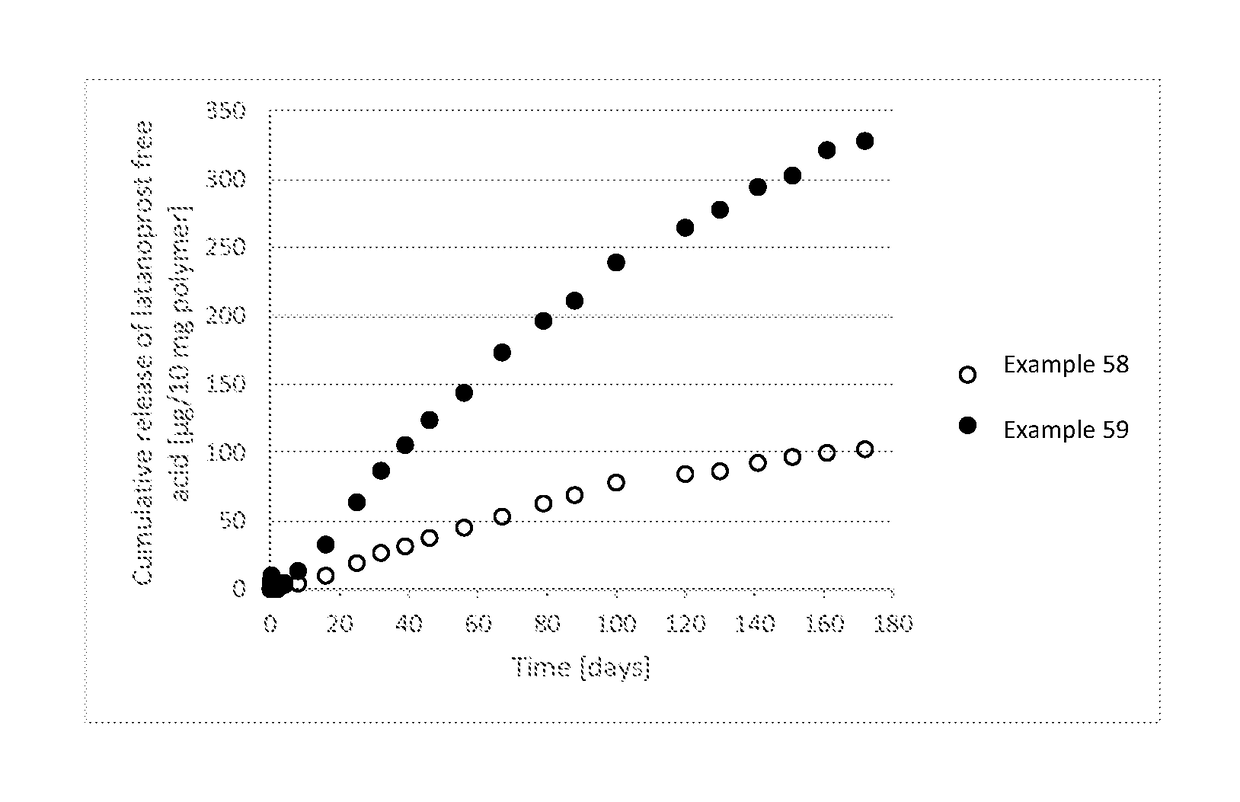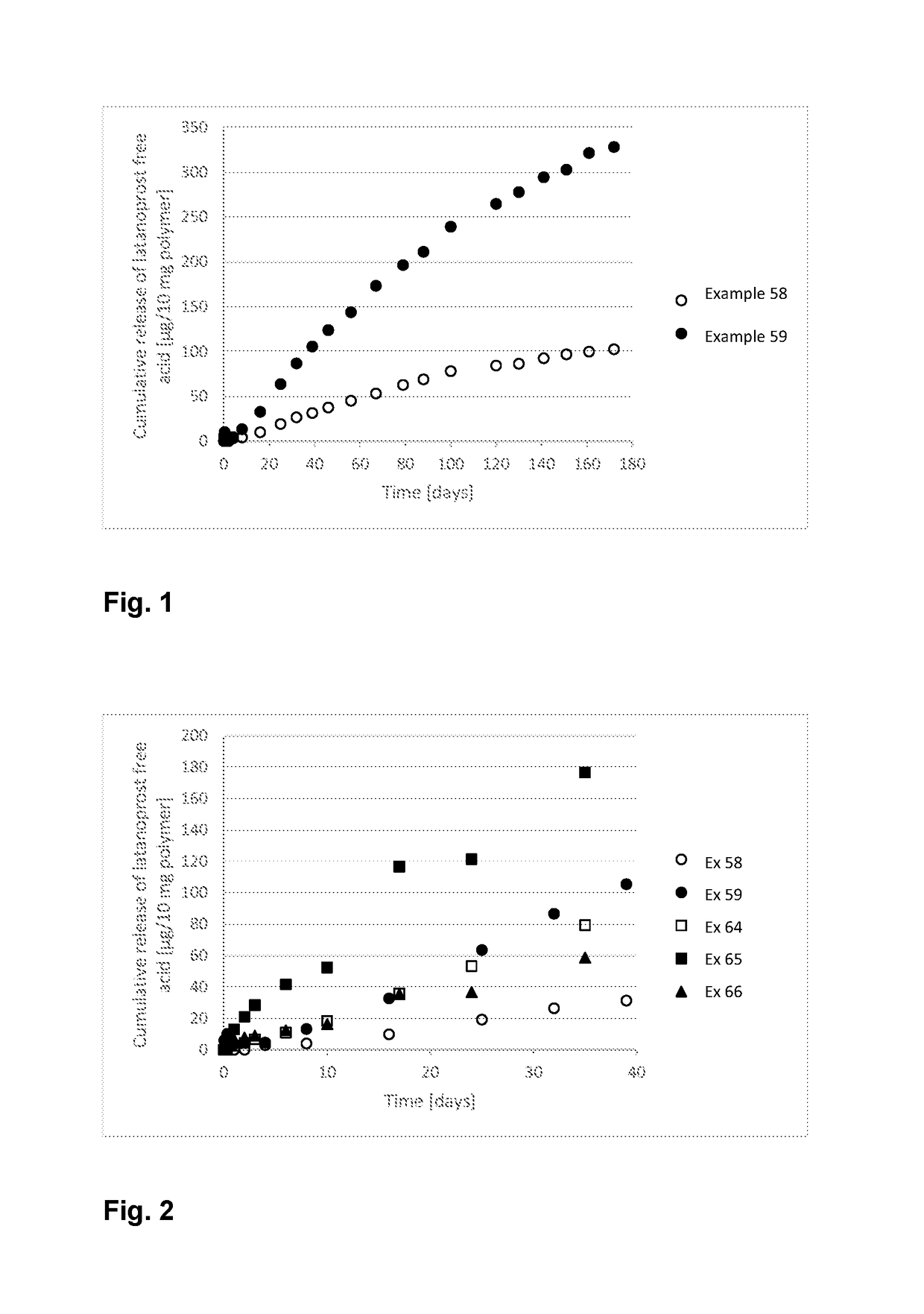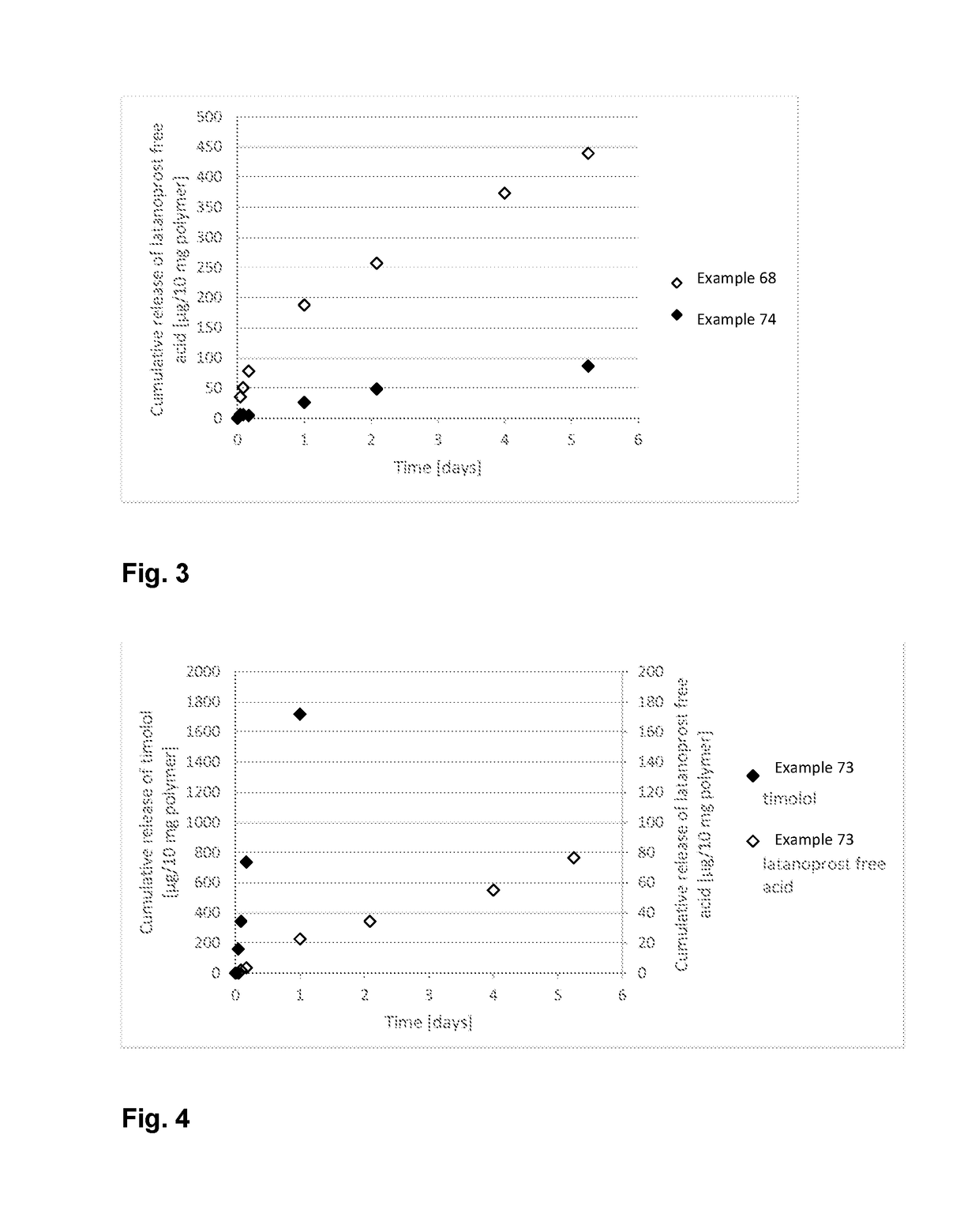Polymer conjugate for delivery of a bioactive agent
a bioactive agent and conjugate technology, applied in the direction of organic active ingredients, pharmaceutical active ingredients, pharmaceutical non-active ingredients, etc., can solve the problems of poor adherence to glaucoma treatment options, slow progression of glaucoma, and patient compliance with glaucoma therapy
- Summary
- Abstract
- Description
- Claims
- Application Information
AI Technical Summary
Benefits of technology
Problems solved by technology
Method used
Image
Examples
example 1
2-(Prop-2-yn-1-yl)pent-4-yn-1-ol
[0622]
Prepared following the procedure of Carney et al. Org. Lett. 2008, 10, 3903.
example 2
2-Hydroxypropane-1,3-diyl bis(hex-5-ynoate)
[0623]
[0624]5-Hexynoic acid (3.2 mL, 3.25 g 28.9 mmol), dihydroxyacetone dimer (1.0238 g, 5.68 mmol), DMAP (0.0348 g, 0.28 mmol) and DCC (4.7382 g, 22.9 mmol) in anhydrous DCM (50 mL) were reacted according to Method 1a outlined above. The crude residue was purified on a thin bed of silica gel, using 50% EtOAc in pet. spirit as eluent to give 2-oxopropane-1,3-diyl bis(hex-5-ynoate) as a white solid (quantitative yield). 1H NMR (400 MHz, CDCl3) δ 4.76 (s, 4H), 2.58 (t, J=7.4 Hz, 4H), 2.29 (td, J=6.9, 2.7 Hz, 4H), 1.98 (t, J=2.7 Hz, 2H), 1.88 (p, J=7.1 Hz, 4H).
[0625]To a solution of 2-oxopropane-1,3-diyl bis(hex-5-ynoate) (376 mg, 1.35 mmol) in anhydrous THF (10 mL), sodium cyanoborohydride (94 mg, 1.51 mmol) was added. Glacial acetic acid was immediately added dropwise until the solution was at pH 4. The reaction mixture was stirred at room temperature for 30 mins. The mixture was quenched with water and extracted with DCM. The organic phase...
example 3
2-(Prop-2-yn-1-yl)pent-4-yn-1-yl 4-hydroxybenzoate
[0626]
[0627]To a solution of 2-(prop-2-yn-1-yl)pent-4-yn-1-ol (J. Org. Chem. 2002, 67, 2778) (380 mg, 3.11 mmol), 4-acetoxybenzoic acid (619 mg, 3.43 mmol) and DMAP (36.9 mg, 0.30 mmol) in DCM at 0° C. was added EDC-HCl (663 mg, 3.46 mmol) and the resulting solution stirred at 0° C. for 1 h before allowing to warm to rt. The mixture was stirred for an additional 21 h before further EDC-HCl (652 mg, 3.40 mmol) was added. The resultant mixture was stirred at rt for an additional 24 h before Et2O and H2O were added. The product was extracted (Et2O), washed (H2O, then brine), dried (Na2SO4), filtered and concentrated under reduced pressure. Flash chromatography (0-100% EtOAc / petrol gradient elution) gave 2-(prop-2-yn-1-yl)pent-4-yn-1-yl 4-acetoxybenzoate (427 mg, 1.50 mmol, 48%) as a colourless oil. 2-(prop-2-yn-1-yl)pent-4-yn-1-yl 4-acetoxybenzoate (423.3 mg, 1.49 mmol) was dissolved in a 3:1 mixture of MeOH:H2O (16 mL) before NH4OAc (5...
PUM
| Property | Measurement | Unit |
|---|---|---|
| mol % | aaaaa | aaaaa |
| mol % | aaaaa | aaaaa |
| mol % | aaaaa | aaaaa |
Abstract
Description
Claims
Application Information
 Login to View More
Login to View More - R&D
- Intellectual Property
- Life Sciences
- Materials
- Tech Scout
- Unparalleled Data Quality
- Higher Quality Content
- 60% Fewer Hallucinations
Browse by: Latest US Patents, China's latest patents, Technical Efficacy Thesaurus, Application Domain, Technology Topic, Popular Technical Reports.
© 2025 PatSnap. All rights reserved.Legal|Privacy policy|Modern Slavery Act Transparency Statement|Sitemap|About US| Contact US: help@patsnap.com



